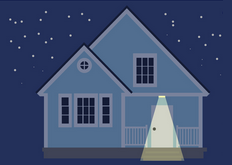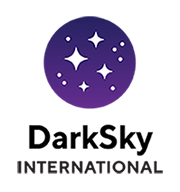Lighting Advice for Borrego Springs

You can help protect Borrego's night sky from the increasing problem of light pollution.
Making small improvements to lighting can lead to huge improvements in the quality of our dark night sky.
courtesy Yorkshire Dales UK National Park Authority
Sky Calendar: May, June and July 2024
By Dr. Randolph Baron
| May 23, Thurs. | Full “Flower” Moon rising 8:23 p.m. |
| May 31, Fri. | Conjunction of Moon and Saturn rising in the east 1:42 a.m. |
| Early June | Sunrise 5:37 a.m. PDT., sunset 7:50 p.m. PDT |
| June 2, Sun | Messier 13 well placed for observation, see note |
| June 2, Sun | Conjunction of waning Moon and Mars rising at 3:07 a.m. Dim Mars 2 degrees east of Moon |
| June 20, Thurs | Summer Solstice 1:50 p.m. Summer in the northern hemisphere begins! |
| June 21, Fri | Full Strawberry Moon rising 8:16 p.m. |
| June 27, Thurs | Conjunction of Moon and Saturn rising in the east 11:58 p.m. Moon will be just north of Saturn |
| Early July | Sunrise 5:40 a.m., sunset 7:58 p.m. |
| July 3, Wed | Conjunction of waning moon and Jupiter rising 3:21 a.m. |
| July 13, Sat | Catch Mercury 16 degrees above western horizon just after sunset |
| July 15, Mon | Conjunction of Mars and Uranus rising in the east at 1:48 a.m. Uranus just north of Mars, binocular sight |
| July 21, Sun | Full Buck Moon rising at 8:39 p.m. |
| July 24 Wed | Conjunction of Moon and Saturn rising 11:10 p.m. |
The planets in June and July
In June Venus will not be visible, Mars will be an improving morning planet rising 3 hours ahead of the sun by month’s end. Jupiter and Saturn are improving morning planets best seen in the hours just before dawn. In July Venus is a difficult object but it is becoming an evening star close to the setting sun. Mars, Jupiter and Saturn are all best viewed in the hours just before sunrise on these short summer nights.
In early June you look up around 11 p.m. you will see the constellation Hercules almost directly above. The most noticeable aspect of this constellation is called keystone of Hercules and consists of a rhomboid figure of 4 stars. Use this diagram with binoculars to find the globular cluster Messier 13. While actually visible to the naked eye as a faint smudge,binoculars will reveal a glowing cloud. This cloud is the light from around 500,000 suns in a star cluster 25,000 light years away. That means that the light from this cluster entering your eyes has been travelling for 25,000 years…wow!
Is Your Home Dark Sky Friendly?

You can reduce light pollution by ensuring that your exterior lighting is neighbor, and dark sky friendly.
Most people will find that a few simple changes can lead to home lighting that is both beautiful and functional,
without contributing to excessive light pollution. The International Dark Sky Association has a Dark Sky
Friendly Home Certification for just that purpose!
Learn more


